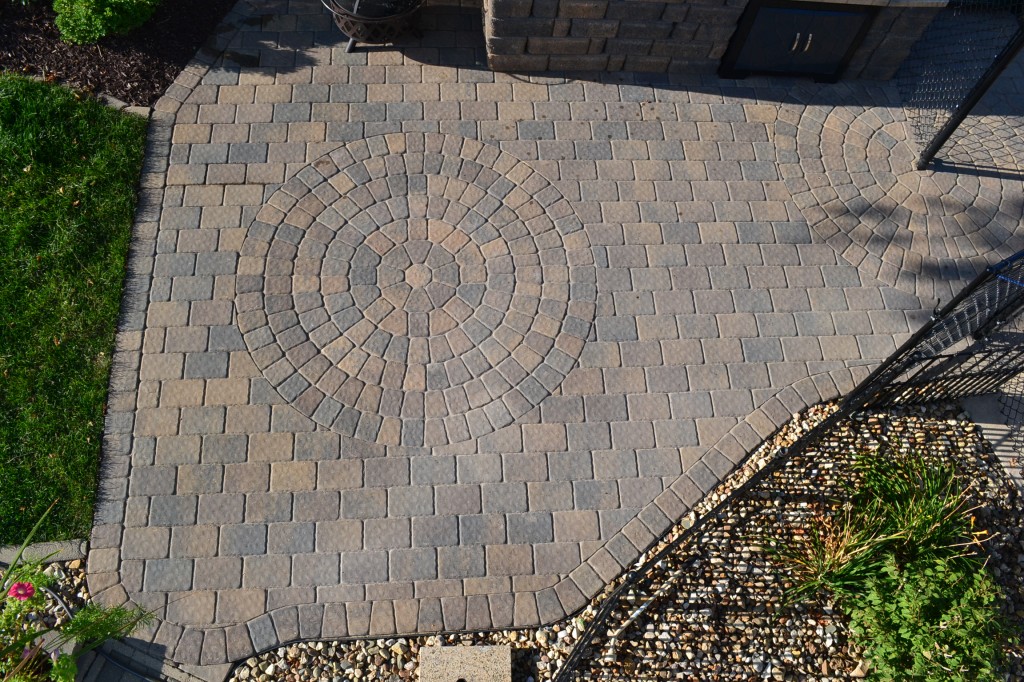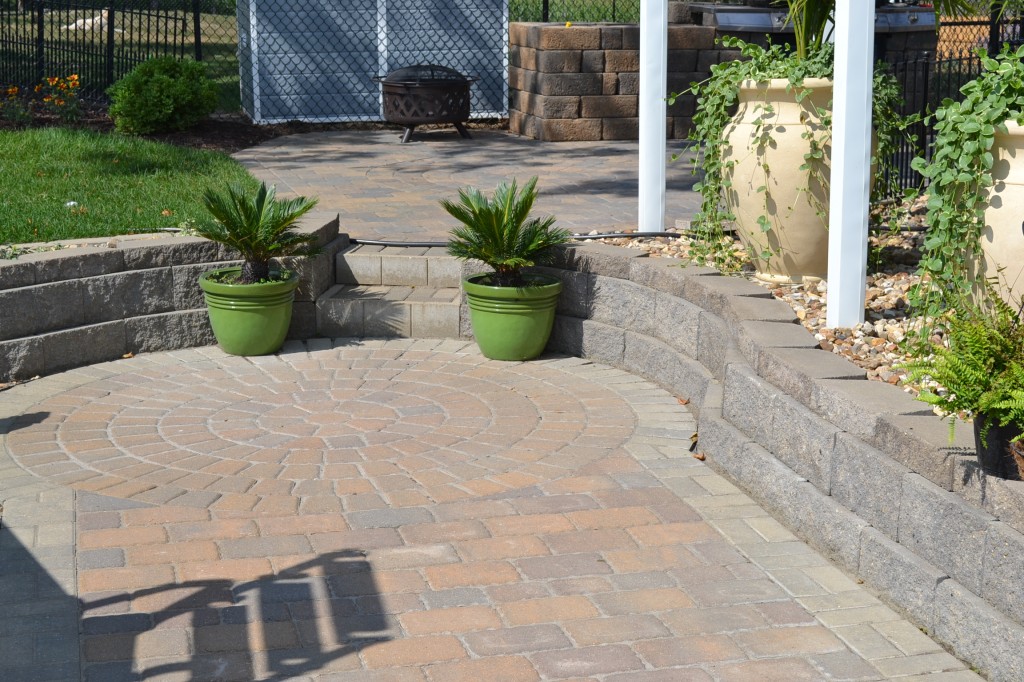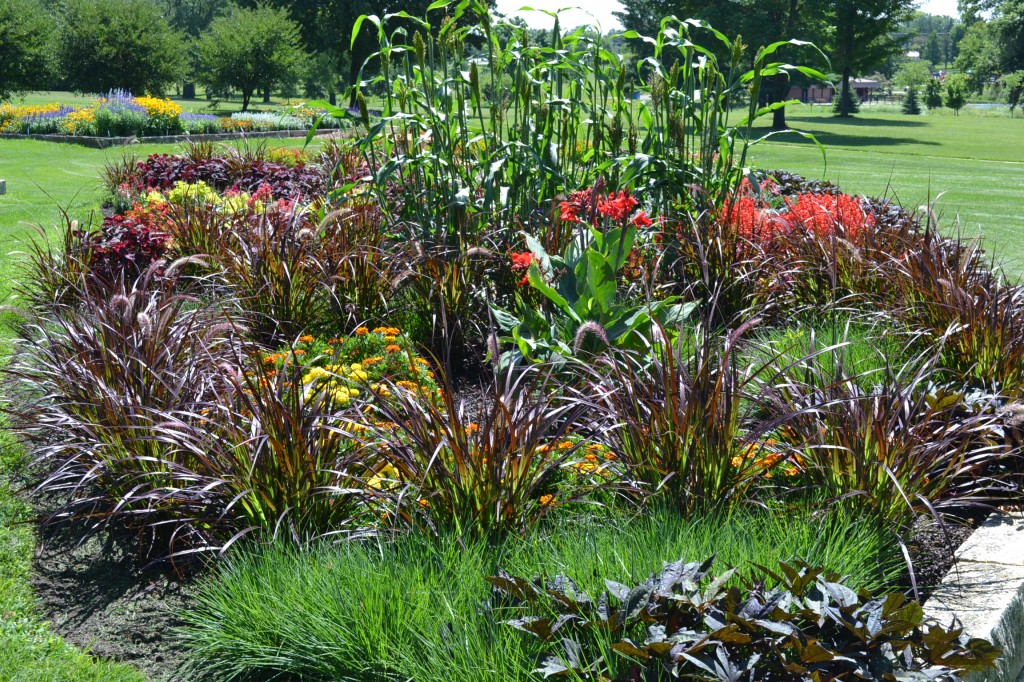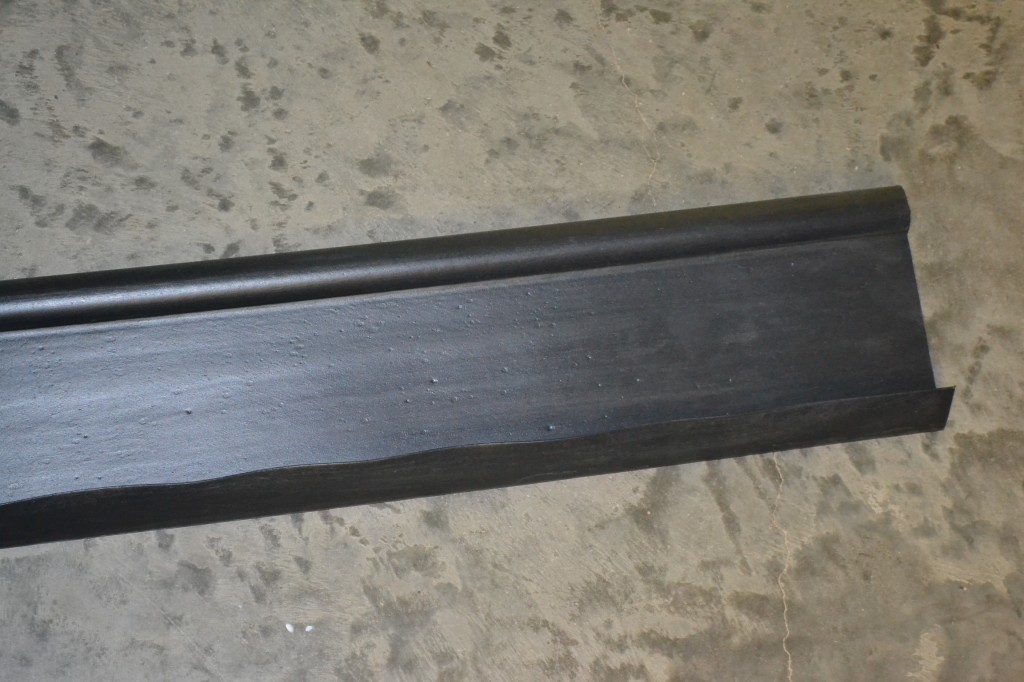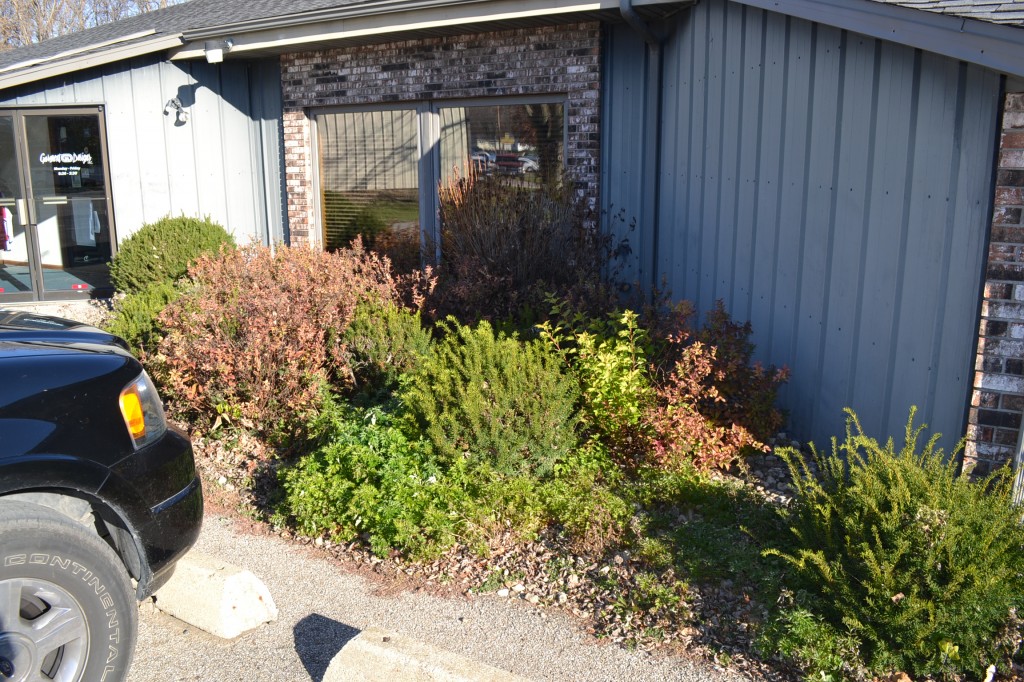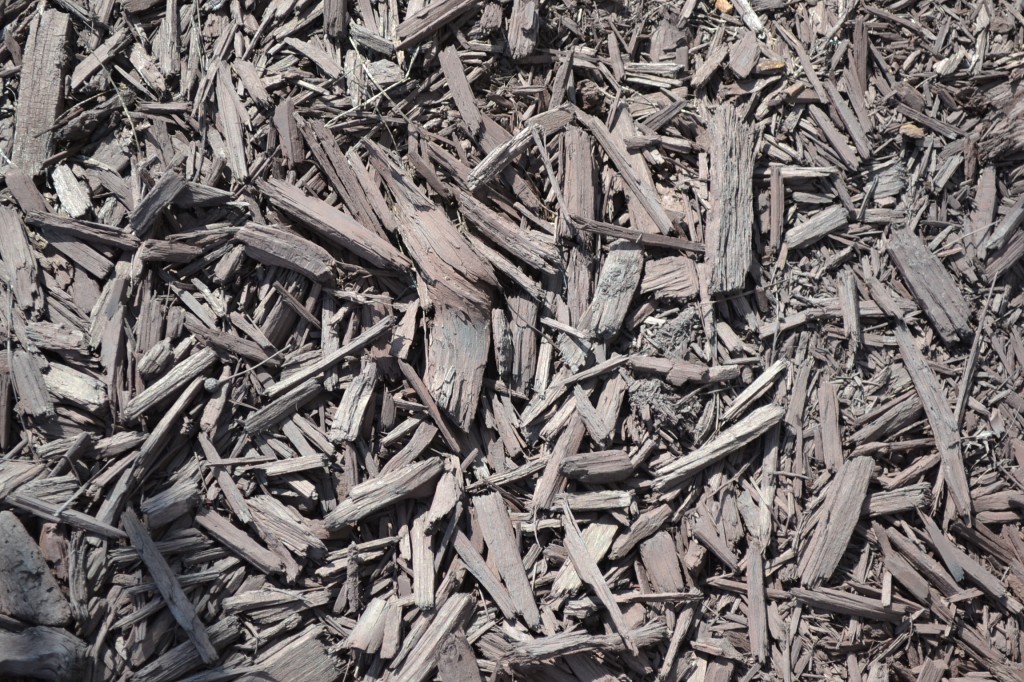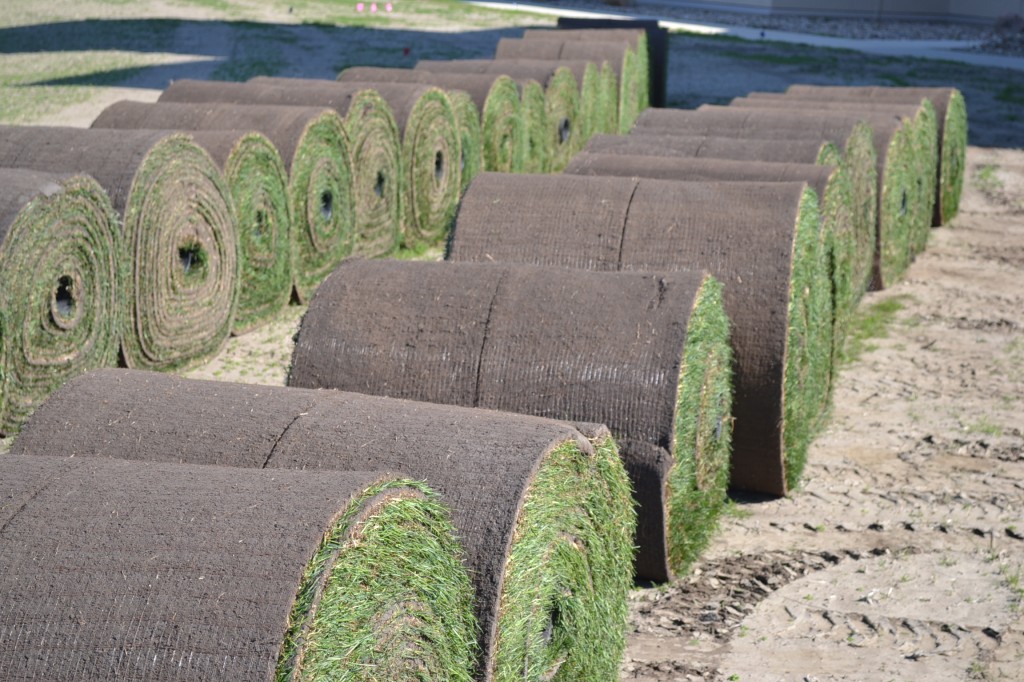NEW LANDSCAPING
- Drainage Tiles
- Fire Pits
- Flower Beds
- Grading
- Mulching
- Outdoor Living Areas
- Patios
- Retaining Walls
- Seeding
- Sodding
- Trees, Shrubs and Flowers
NEW LANDSCAPES
New landscaping can consist of a new construction project or a complete tear out. Anytime an entire landscape is removed, it would fall under the premise of new landscaping. One of the biggest benefits of a new project is that you get to start fresh. Out with the old and in with the new. Starting with a clean slate allows you to not only choose your plant material but your hard goods as well.
Before you start your project, it is always good to have a solid plan in place. Many landscape designers can used photo enhanced images to show you what your project will look like when it’s finished before a single plant is installed. Photo imaging allows you to visualize your completed project and make changes along the way to improve the design.
A site plan is also a good idea as well. Drawing out your design will help with plant layout and determining the material quantities needed to complete the project. The design can be simplistic or detailed depending on the scope of the project.
THINGS TO CONSIDER WHEN INSTALLING PLANTS
Creating a beautiful landscape is accomplished through planning and implementing proper horticultural practices. Simply put, creating a healthy and vibrant landscape is not as easy as going to the big box store and throwing some plants and mulch in your cart. If you want to have a healthy and attractive landscape for years to come, there are a few things that you should consider.
Plant selection is vital in promoting landscape longevity. There are several things that you should look for when selecting a plant for your project. First, you need to make sure that the plant will fit in your landscape area. As beautiful as the plant looks at the nursery, remember that it does grow. You should select a plant that will stay in the growing area that it is planted in. Your landscape design should allow for enough room between the plants so that they do not grow together when they are mature. Overcrowding is one of the biggest mistakes that amateur landscapers make. The completed project can look great after it is installed, but it is not sustainable as the plants mature.
Another thing that you should carefully monitor when selecting plants for your project is the growing conditions of your plant. Sun requirements, soil conditions, and available water play a critical part in the success of your plant. When selecting plants, you should also consider the role that insects and fungus have on your plant as well. Some plant varieties are hardier than others. Likewise, certain plants are more prone to fungus outbreaks and insect infestation.
THINGS TO CONSIDER WHEN INSTALLING HARDGOODS
There are infinite hardgoods that you can install in your project. Anything from edging to mulch to rock. All of these products will give your project a unique look. Choosing the right products for your project is important.
Depending on your preference and application, most landscape beds are topdressed with either rock or mulch. Both products have their benefits. Mulch is a product that breaks down over time. Since it decomposes, it will likely need topdressing every year to maintain its appearance. Rock works well because it only needs to be topdressed when needed. Some plants do not grow as well in rock applications as in mulch applications. Consider all of the pros and cons before choosing a product.
Most landscape edging is done with plastic or concrete products. Each product has its benefits and drawbacks. Below are a few issues that may arise with each product.
Concrete Products
Concrete edging products will tolerate frost heaving better than plastic edging. If you do have a few blocks settle or rise, it is easy to re-set them. Concrete products do take longer to install, hence the additional cost of the product. If one of the products becomes damaged, it is easy to replace.
Plastic Products
Plastic products will heave with the frost if installed incorrectly. Most plastic edging products come in 20-foot lengths. The product lengths also have to be spliced together. If splices are done incorrectly, they become noticeable. Plastic edging products install quickly, so they cost less to install. Keep in mind that if the product becomes damaged, it may be necessary to replace the entire length. Splicing can be done if the product is damaged, but more than likely it will come out of the ground when it frosts.
LANDSCAPE RENOVATION
Landscape bed renovation is the process of taking an existing landscape bed and sprucing it up. This process can be accomplished by pruning existing plant material, topdressing mulch, pulling weeds, etc. Most landscapes that do not receive annual maintenance should be renovated at least every few years. If a landscape is neglected for years, the chances are that it has lost its eye appeal. After several years, many of the plants installed will be mature or steadily on their way to maturity. Keeping your plants healthy by removing dead, damaged or infected branches will help ensure their existence for years to come.
Overgrown plants can block the view out of windows, cover building lights and house numbers. Keeping your plants maintained helps avoid future problems with utilities and other plant material. Overgrowth is one of the main reasons why most people perform landscape bed renovation. When the plant was installed several years ago, it looked great. Now that it is mature and full, it doesn’t fit its space well and seems out of place.
When bushes grow into other bushes, the dominant plant can kill out the other plant. Evergreens are notorious for being damaged by other plants. By the time the property owner takes the initiative to prune the plants that have grown into each other, it is too late. The lack of sunlight causes the evergreen to die out, and only the woody inner of the plant remains. If your evergreens get to this stage, it is better to remove the plant because it will not fill in correctly.
Utility companies like gas and electric will not be able to read the meters at your property if your shrubs are overgrown. Large bushes covering access points to your house make great areas for burglars to enter your property unseen. All in all, if you maintain your property on a regular basis and perform a landscape bed renovation every few years, your property will look great.
MULCH DYING
Turn faded worn out mulch into fresh mulch with mulch dying. If your mulch beds are full, but the color has faded, consider re-dying your mulch. Several companies sell the same dyes that are used to color new mulch. Mulch dying is the most cost-effective way to regain your mulches beauty without topdressing it. These products are environmentally friendly and will not harm your plants or animals. Cut your yearly mulch expense in half by choosing mulch dying over topdressing.
Mulch dyes are easy to apply. These dyes can be installed with a backpack sprayer or hand can. Keep in mind that the product that you are using is a dye. This means that the product will also color nontarget items as well. Cement and siding can be stained with mulch dye if not installed properly. We recommend applying the product on days with little or no wind. It is also a good idea to shield non-target areas with a piece of wood or cardboard.
Sodding
Sodding is a great way to get an instant lawn. Instead of waiting for weeks or months for a lawn to fully develop, sod can be installed in a few hours. There are pros and cons of sod installation.
Some of the benefits of sod installation are:
- An instant lawn
- Quicker erosion control
- Minimal weeds in the lawn
- Less work to establish
Some of the drawbacks of sod are:
- Sod costs more to install than seed
- Must be watered immediately following the installation
- Since the roots of sod are cut, they do not re-grow as deep as newly planted seed.
- New sod does not match established lawns as well as seed. Seed is easier to blend when doing patchwork.

